League regular Bruce Emmett brought some of his International Baccalaureate art students to the field house to workshop some games. In their class they have been developing games as an exploration of creative procedure, dubbing the exercise “Little League”.
We play-tested one of the two game ides they brought, and began to develop another from scratch.
Stuffie Wars
This was a game they had already discussed quite a bit, but had not yet tried playing. Kathleen, who had the initial concept, explained the guidelines they had developed as a group:
- The game is like dodgeball, but using stuffed animal toys instead of balls.
- If you are hit by a stuffie, you can no longer throw, and instead have to begin to act like the animal that hit you. You are required to put effort into playing your animal.
- Each team has a Psychologist, who is able to ‘heal’ her players. However, if the Psychologist is hit, she also becomes an animal and the team no longer has a healer.
- Besides hitting members of the other team to turn them into animals, a team can also win Invention Points through particularly good acting. In this way, a team that had apparently won by hitting the other team, could actually lose the match if the other team had performed very well on the acting front.
- In case of a tie there would be a sudden-death faceoff.
Development and adjustments
- The field was mucky so we used the tennis court, and then further reduced the size of the playing area.
- Neither team made good use of their Psychologist, so that role was essentially dropped after a couple trials. However, we needed some way for the hit players (animals) to be able to re-enter play or be useful in some way, so we made it so that they could retrieve stuffies that had landed out of play, and if they intercepted a stuffie that had been thrown, the person who threw it instead became the animal.
- We added the traditional dodgeball rule that if you caught a stuffie that was being thrown at you, the other person was out (became an animal).
- With the particular group that was playing, there was a tendency to get caught up in the competitive aspects of throwing the toys, but we were reminded that the acting aspect could be equally important. After that, we made sure the referees were keeping track of the acting, and at the end of the game, when one team had all been turned into animals, they decided which ‘animals’ had won their freedom through good performance. Scoring then became a matter of counting who was still alive or revived and who remained animal.
Character of the game
- This game included a couple really interesting premises. One was the idea of including a healer figure. This is a common feature of role-playing games, of course, but less so for active ones.
- Another innovative idea was to give significant weight to the acting element, to the extent that it could outweigh the athletic performance. It was a good way of tempering the cutthroat aspects of competition while suggesting other solutions to a situation.
- There was an elegant play of references within the game, drawing on the languages of hunting/targeting animals, healing, and play-acting.
Stuffie Dilemma
Although we were pressed for time, we also wanted to try to develop a new game from scratch. Since we had the quantity of stuffed toys on hand, Germaine suggested some kind of game starting from the basic game theory scenario known as the Prisoner’s Dilemma. Game theory is concerned with strategy and decision-making, and The Prisoner’s Dilemma is used as an example of a situation in which two players choose to cooperate or betray the other. In its classic formulation, two criminal accomplices are separately offered a deal: turn on the other by confessing and go free while the other is punished to the maximum; stay silent and receive a small punishment; or if both confess, both be punished but less than the maximum.
There are many variations of the prisoner’s dilemma. We came up with one, not unlike the dilemma a child might actually face, in which she must decide whether to share her toys, with the possibility that too-reckless generosity might be ‘punished’ by having her toys stolen by the other. Instead of gauging punishment, the two sides were essentially betting a finite resource. We had two teams start with a quantity of toys, and based on the combinations played, toys were taken or given to the other side. It was far from resolved as a game, but served as an exercise in considering how cooperation and selfishness might be weighed and valued.

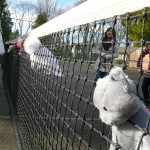
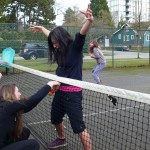
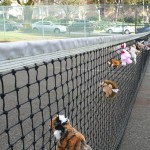
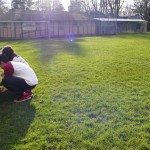
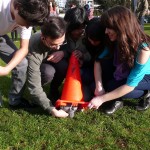
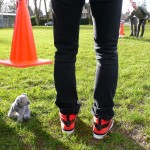
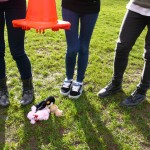
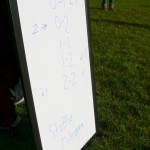
One comment
Toggle Comments